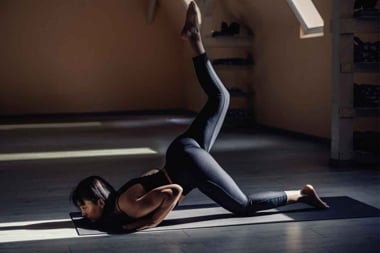
Imagine a massage technique that can speed healing, reduce inflammation, and boost the immune system. Manual lymph drainage is just such a technique.
Imagine a massage technique that can relieve swollen ankles, drain your sinuses, and help you get over that nasty head cold. Imagine being able to actually manipulate the fluid balance of the body to speed healing, reduce inflammation, and boost the immune system all at once.
Manual lymph drainage is just such a massage technique. Where Swedish massage is concerned primarily with increasing blood flow through the muscles, manual lymph drainage works by increasing the amount of fluid that passes through the lymphatic system.
How Does It Work?
During manual lymph drainage, the therapist gently stimulates the lymph system using knowledge of the anatomy and physiology of the lymph system, along with standard massage strokes devised in the 1930s by Danish physical therapists Emil and Estrid Vodder.
Treatment may be as simple as a head and scalp massage or as complicated as complete decongestive therapy, in which manual lymph drainage is but one technique in a combination of precise treatments for lymphedema (chronic progressive swelling).
Massage techniques differ but the leading technique is the Vodder method. Other techniques use variations that are equally effective when performed by well-trained therapists.
Do It Yourself
A simplified version of the technique is easily self-administered and can be used to improve immune function or to address minor swelling. It can also be used to maintain a reduction in lymphedema that was accomplished with a therapist during the intensive phase of complete decongestive therapy. The three basics of the do-it-yourself technique are diaphragmatic breathing (see sidebar), lymph node pumping, and progressive light massage.
In lymph node pumping, you place your hand over a large group of lymph nodes, in the armpit (for the upper body) or in the crease at the top of the leg (for the lower body), and press deeply, gently, and rhythmically toward the heart. Don’t overdo it; this should not feel uncomfortable.
Progressive light massage consists of lightly stretching the skin toward the lymph nodes, starting closest to the nodes and working progressively farther from them, allowing the skin to rebound naturally after the short stretch.
Manual lymph drainage is a valuable therapeutic tool. It should not be used in patients with congestive heart failure or kidney disease as these organs will not be able to process the excess fluid that is mobilized.
Your therapist should have received a minimum of 40 hours of training from a reputable institution. To find a qualified therapist, go to vodderschool.com.
Deep Breathing Stimulates Lymph Drainage
Deep diaphragmatic breathing is one of the most powerful ways to activate the lymphatic system. Deep breathing makes use of the largest lymphatic vessel in the body, the thoracic duct, which runs parallel to the aorta and transports lymph from the lower half of the body to the venous angle above the heart. The thoracic duct pierces the diaphragm, which “milks” the duct, powerfully activating the entire lymphatic system.
How to Do It
Either sit in a chair with your back straight or lie down with your knees bent.
Place your hands over your abdomen, but do not press.
As you inhale, your abdomen should rise; as you exhale, your abdomen should collapse. Breathe with a normal rhythm, allowing the expansion and collapse of the diaphragm to occur in a natural, unforced matter.
The weight of your hands creates resistance against the diaphragm, increasing the pressure
on the thoracic duct, which helps propel the lymph fluid toward the heart.
This simple exercise amplifies the amount of fluid moving through the lymph system and increases the rate of flow. Deep breathing should leave you feeling relaxed yet energized.




